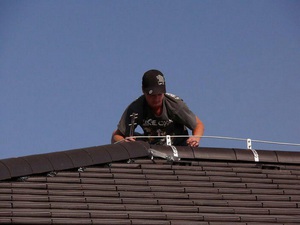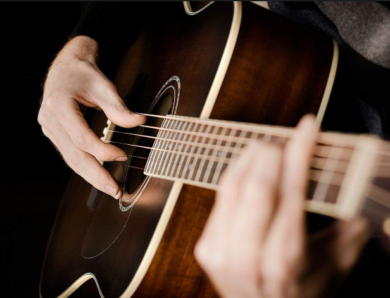
How to make a lightning rod: lightning protection design, installation in a private house lightning rod and useful tips
We all know, that lightning is beautiful only in the distance, and for a person its blow can be fatal. Lightning strikes can also damage equipment or cause a flash. Lightning does not come to a private house so often, but if it happens, it will be extremely difficult to cope with the consequences.
Today we will talk about lightning protection at home and how the lightning rod is arranged.
Features of lightning protection of a private house
With the development of technology and the emergence of various wireless equipment, the risk of lightning strikes has increased. At the same time, modern scientific developments are successfully fighting it.
When storm clouds approach the sky and lightning strikes it, a warning and intelligent person will not be afraid of them, because he protected his home from being hit in advance.
so, a good host is sure to show interest, how to make lightning protection of a private house. You can not worry, if your private home is located next to a tower, equipped with a lightning rod or power lines. But in the risk zone of lightning are buildings, which:
- have a single location;
- built on a hill;
- are located near the reservoir.
Lightning conductor should be planned at the stage of construction of a private house. So, lightning protection circuit should be performed during construction. Private houses belong to the third class of fire safety, in accordance, they must be installed on the lightning rod by all means.
Choosing the right type of lightning protection for a private home depends on a number of factors:
- The initial condition of the house.
- Location conditions.
- Climatic conditions of the area.
- Soil type.
Be sure to consider the location of your home. So, if lightning strikes a tree, antenna, pillar next to the house, then they can create a screen effect and the building will also fall into the affected area.
Remember, that different types of soil differ in their conductivity and resistance, what to consider when choosing a strip cross section and the size of the recess of the contour.
If the climate of the area is such, that the number of storm periods per year exceeds the mark in 40 times, and the house is near the water, then the risk of lightning increases several times.
How a lightning rod is arranged for a private house
The principle of operation of the lightning rod is quite simple: the house is protected from lightning due to that, that the discharge is diverted to the ground.
However, the efficiency of lightning is possible only with a complex system construction, which consists of two protective systems: external and internal.
Internal safety must protect the equipment from surges during a thunderstorm. And even if the discharge hits within a radius of several kilometers, an overvoltage limiter is still required.
If you do not have such protection, then, when approaching the storm front within three kilometers, turn off all electrical appliances in advance.
And an external protection system is needed to ensure the safety of the house and its occupants during a thunderstorm. A simple lightning rod consists of the following elements:
- Lightning receiver.
- Supports.
- Drain.
- Grounding circuit.
Lightning receiver is a conductor of metal up to one and a half meters in length, which assumes the lightning discharge. Such lightning protection should be installed in a country house at its highest point:
- roof;
- chimney;
- teleantenna.
This lightning protection is suitable for installation on a metal roof, and if the roof is slate, then you need to stretch a metal cable on wooden supports up to 2 meters and cover it with insulators.
On roofs from a tile it is necessary to stretch on a ridge a special lightning protection grid with current collectors. Terminals are required to connect the lightning rod to the ground circuit. They are a steel wire, which should be laid on the wall of the house and welded to the lightning rod and grounding circuit.
The lightning protection ground includes two connected electrodes, which are driven into the ground. According to the rules of grounding of household appliances and lightning protection must be common. The range of the lightning rod depends on its height.
If the lightning rod is done correctly and efficiently, then it will represent the least resistance, by which the lightning discharge is transmitted from the house to the ground.
How to make lightning protection for a private home with your own hands
so, we figured it out, how lightning protection is arranged for the home, and how to choose it depending on the type of roof. Now we will talk about it, how to make quality lightning protection for the house with your own hands.
Lightning protection mesh will be a metal wire structure with a diameter of six meters, which is made by welding. It should be placed on the roof and connected to the ground circuit with several power outlets.
This mesh is suitable for non-metallic roofs to protect one building, as other structures are located below the level. Also, the grid can be laid on the roof at the stage of construction of the house.
Protective wire can be made as follows:
- Pull the cable on the insulators between two supports made of metal or wood.
- Installation is performed at height 0,25 m on the conic.
- The diameter of the wire must be at least 6 mm
You need to make a loop around the wire pipe and connect it to the lightning rod by soldering or welding. The drain is made of the same wire. As a result, we get a shack-like protection zone, which is suitable for roofs of any material, except metal.
A pin lightning rod is a pin with the following parameters:
- the cross-sectional shape may be round, rectangular or square;
- pin length at least 0,25 m;
- cross-sectional area 100 square mm.
It is the pin that takes on the key lightning strike, therefore, it must be able to withstand maximum loads of dynamic and temperature nature.
The material for the pin is selected as follows, so that he was not afraid of oxidation, it can be galvanized steel or copper, therefore it is impossible to paint such lightning protection. The cross-sectional diameter of the rod or pipe should be a minimum 12 mm. The end of the hollow pipe must be welded. The structure should be installed on the ridge of the roof on the mast of the required length.
Expert advice for lightning protection of the house
Keep these tips and tricks in mind when installing and caring for lightning protection:
-
To ground a metal roof, you can use storm drains as a drain.
- For the convenience of clogging the pipe, you can make scaffolding.
- The size of the protection zone can be determined using a right isosceles triangle. The leg should be located parallel to the ground.
- Do not place drains near the door.
- Do not forget to ground all metal roof structures.
- Joints on the protective structure are best welded.
- Before the start of the storm season, carefully inspect all parts of the structure and mounting locations each year. If something is wrong, should be replaced or painted in advance.
- The connection should be checked every three years for serviceability, clean the contacts and tighten loose connections or replace them with new ones.
- Once every five years, open the ground electrodes and check their connection and corrosion depth. If the rusty section is reduced by a third or more, it needs to be replaced with a new one.
- For greater reliability, you can install two outlets and clean regularly.
Remember, so that the lightning protection of your private country house can serve you properly for many years and protect in cloudy stormy weather, it must be properly installed and regularly maintained.




